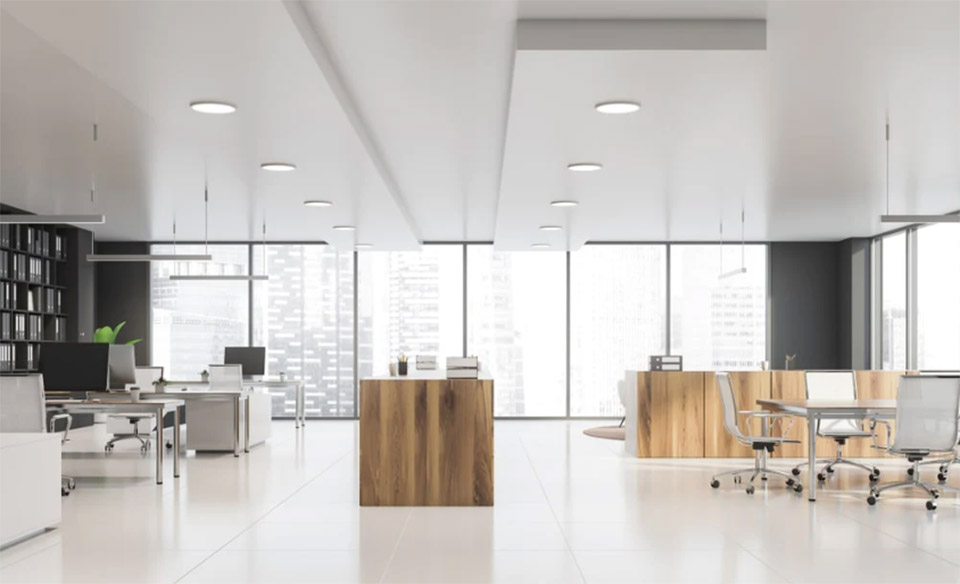Introduction
Dimmable LED lighting has revolutionized modern lighting design by providing both energy efficiency and flexibility in ambiance control. Unlike traditional incandescent bulbs, dimmable LEDs allow users to adjust the brightness to suit different environments and activities, enhancing comfort while minimizing energy consumption. This makes them a popular choice for residential, commercial, and hospitality applications, where lighting needs can vary throughout the day.
How Dimmable LED Lighting Works
Dimmable LED lights operate using advanced electronic circuits that adjust the light output by varying the power supply. These LEDs are compatible with specific dimmer switches, often requiring drivers that match the LED’s electrical requirements. Unlike older dimmable lights that use resistors to reduce brightness (and often waste energy), LEDs lower their power consumption as they dim, maintaining high efficiency at every brightness level.

Key Benefits of Dimmable LED Lighting
Energy Efficiency: One of the most significant advantages of dimmable LED lighting is its energy efficiency. When dimmed, these lights consume less power, which can translate to considerable energy savings over time.
Extended Lifespan: LEDs already have an extended lifespan compared to traditional lighting, but dimming can further increase longevity. When operated at reduced brightness, less stress is placed on the LED components, reducing wear and tear.
Ambiance Customization: Whether creating a cozy atmosphere for a living room or a bright, productive workspace, dimmable LEDs offer unmatched flexibility. With just a twist of a dial or touch of a button, users can change the lighting to suit different moods, times of day, or tasks.
Smooth Transitions: High-quality dimmable LEDs offer smooth transitions in brightness, avoiding the flicker or harsh light changes often associated with older dimmable technologies like incandescent or CFL (Compact Fluorescent Lamp) bulbs.
Smart Home Integration: Many modern dimmable LEDs can be integrated into smart home systems, allowing remote control of lighting levels through apps or voice commands. This not only adds convenience but also further optimizes energy use by ensuring lights are only as bright as needed.
Applications of Dimmable LED Lighting
Residential Use: In homes, dimmable LED lights are ideal for living rooms, bedrooms, dining areas, and even kitchens where lighting needs can shift from bright task lighting to softer, relaxing illumination.
Commercial Spaces: Offices, conference rooms, and lobbies benefit from the versatility of dimmable LEDs. Brightness can be adjusted for meetings, presentations, or casual gatherings, improving both aesthetics and functionality.
Hospitality: Hotels, restaurants, and bars use dimmable LED lighting to create various atmospheres throughout the day, from bright and inviting during peak hours to dim and intimate during evening service.
Outdoor Lighting: Dimmable LED floodlights or landscape lighting allow homeowners or businesses to adjust brightness depending on the time of night or specific events, enhancing security and energy efficiency.
Choosing the Right Dimmable LED Lights and Dimmers
When selecting dimmable LED lights, it’s important to ensure compatibility with the dimmer switch. Not all dimmable LEDs work with standard dimmers; using the wrong dimmer can result in flickering, reduced lifespan, or an inability to adjust brightness smoothly. It’s best to check the manufacturer’s guidelines for compatibility and, if necessary, install LED-specific dimmers for optimal performance.
Common Challenges and Solutions
Flickering or Humming: Some users may experience flickering or humming noises with dimmable LEDs. This is often caused by incompatible dimmers or poor-quality LEDs. Ensuring that the lights and dimmers are compatible can resolve these issues.
Limited Dimming Range: Not all dimmable LEDs can dim as low as incandescent bulbs. Choosing high-quality LEDs designed for deep dimming can improve the range.
Color Temperature Shifts: While dimming incandescent bulbs naturally warms their color, some LEDs may not behave the same. However, modern dimmable LEDs with "warm dim" technology mimic this effect, changing color from cool to warm as they dim.

Energy and Cost Savings
Dimmable LED lights offer significant energy savings compared to traditional incandescent or halogen bulbs. When dimmed, the power consumption decreases proportionally, unlike older technologies where dimming reduced light but didn’t affect power use as much. This reduced energy consumption leads to lower electricity bills and a smaller carbon footprint, making dimmable LEDs an environmentally friendly option for any setting.
Future of Dimmable LED Lighting
With advances in technology, dimmable LED lighting will continue to evolve. Smart dimming systems, where lighting can be controlled remotely or adjusted automatically based on time or occupancy, are becoming more common. Furthermore, LEDs will likely continue to improve in terms of compatibility with traditional dimming systems, ease of installation, and extended lifespan, making them even more attractive to consumers and businesses alike.
Conclusion
Dimmable LED lighting offers a combination of energy efficiency, longevity, and ambiance control that traditional lighting systems can’t match. Whether for residential or commercial use, these lights provide users with a flexible, cost-effective way to customize their environment while significantly reducing energy consumption. As LED technology continues to advance, dimmable solutions will remain at the forefront of modern lighting design, offering even more sophisticated options for smart homes and businesses.

























